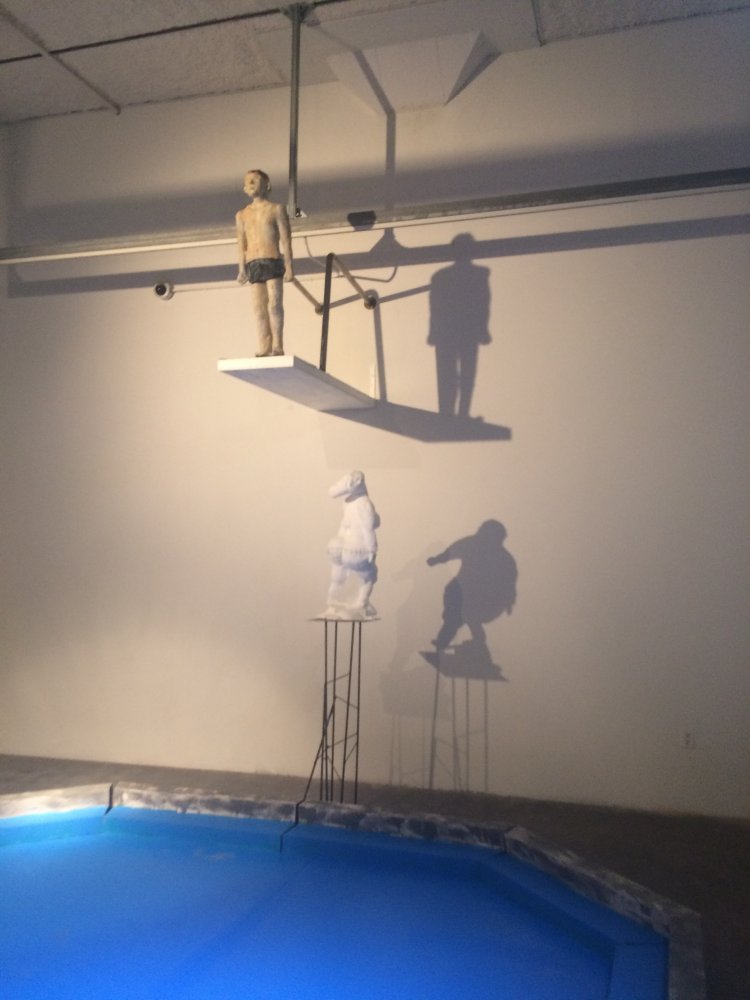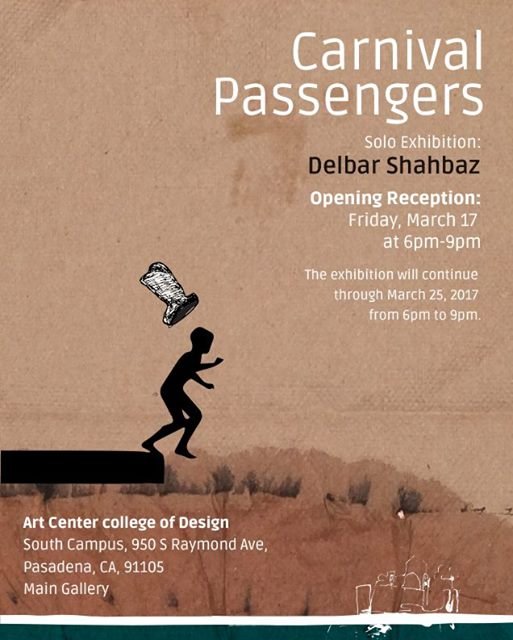- Jobs
- Open Calls
- Events
- Learning
- More
- SUBMIT
CARNIVAL PASSENGERS



it is my final show at the Art Center College of Design in Pasadena. it will be up until March25.
the statement:
Carnival Passengers
“ Carnival is not a spectacle seen by the people; they live in it, and everyone participates because it's very idea embraces all the people. While carnival lasts, there is no other life outside it. During carnival time life is subject only to its laws, that is, the laws of its own freedom. It has a universal spirit; it is a special condition of the entire world, of the world’s revival and renewal, in which all take part.”
Living in a society under dictatorship changes people’s behavior. They role-play instead of living their lives, gradually becoming deformed. They become carnivalesque. People lose their identity until they become totally lost. Living in a country under dictatorship is painful, but people’s senses are acute and alive. Totalitarianism creates censorship but it also creates secret stories. Stories which are hidden, painful, poetic and touching. This installation expresses such a story.
By using the Hoz (pool) as the foundation of my installation, I am referencing the Persian culture, which is a powerful stimulus for my life and artwork. The Hoz is a traditional Persian architectural element of private homes, a place at which behavior escapes the control of the state. Historically, it is a place of power, but a power that encourages empathy. In Iran specifically the Hoz has always been a place of serenity, which can save people from drowning in the religious political situation.
All the figurative forms in the pool are carnivalesque, morphed creatures. I’ve used twisted forms and rough, undulating surfaces. In my carnival, there is a man/woman with the huge dick and a big, curvy butt who seems so powerful. He is playing the role of a man who is proud of his gender, but he is suffering. The gigantic eight feet tall “Monumental Fertility” sculpture seems to be so fertile, firm and faithful. She has an important role to play in the carnival. She is a woman. A powerful woman!
All the forms are carnivalesque except “The Son,” a sculpture of a young boy on a diving board. I have a younger sister who got pregnant ten months ago. I am very close to her and her pregnancy made me the anxious for the future of this baby. When my sister found out that her kid was a boy I started making “The Son.” He is a five-year-old boy made out of ceramic. He doesn’t have multiple layers the way most of my sculptures do. By having him be one solid surface, I wanted to show that he doesn’t carry pre-defined characters yet. I made his appearance mature and thoughtful. This is how I remember boys of that age. They are persuaded over time to look strong although they are not. I wanted to give him the strength to be on the diving board and prepare for life. I wanted to have a character that is not involved in the carnival yet. I wanted to make him the hero who will jump in the pool of morphed carnivalesque creatures and be a survivor by not becoming part of them. I don’t want him to live his whole life in the carnival but I don’t know how this can happen. So he remains on the diving board.
I am constructing a “power game” within my installation. The power game is represented by the shifting scale of figures and landscapes, by iconic feminine and masculine forms (which have been distorted) and by multi-layered textures. Looking is key to the power game, looking from the outside to the inside of the composition is very different than being in the composition. Both convey different types of power.
I believe that culture and history are significant elements that enable us to be alive and true regardless of what power structures our lives are governed by. In this installation, I am playing with a reaction to the prominent and rooted perspective of Middle Eastern patriarchal religious society, as I experienced it. But this work is for viewers from any culture. Coping with patriarchy and its psychological affects on society has been a primary problem since before the Iranian Revolution. I feel that Art is a powerful force that can dismantle political structures; which is why world powers are destroying the histories and cultures that are a threat to them.
Democracy opened my eyes to see my power and myself. Before, there were so many kinds of burdens, first, the body, which is taboo only because it’s a female body. Also, hiding your reality, being an obedient woman, not reacting when males push you down because you are a woman. These should not define being a woman. Being woman is a gift that I was not aware of that. I could not have created this installation if I were not living in a democratic country or a democratic community. I believe “Carnival Passengers” is intelligible for people who have experienced freedom and democracy at some stage of their lives. If one is without the experience of democracy, “Carnival Passengers” provides a site to think about it.
Bakhtin, “Rabelais and his world”, 1984, p7
Name:
delbar shahbaz
Website:






Comments
AntoniaG
Wed, 03/13/2019 - 03:06
Hello